Throughout lengthy artistic careers by any serious artist there is experimentation. This can be accomplished via a deeper dive into a medium long worked with, analysis of ideas and theories, or exploring new materials and techniques. Jill Birschbach was trained as a photographer and has worked in the photography industry for Getty Images for years. In recent time, she has shifted her attention to ceramics to create haunting objects that function on divergent physical and psychological planes. This week The COMP Magazine trekked out to the Midwest Clay Guild in Skokie, Illinois to discuss with Birschbach her shift in materials used, the role the Midwest has played in her studio practice, how the tactile process is essential at present, and her participation in the exhibition, Transparent, Translucent, Opaque, at the Geneva Center for the Arts, in Geneva, Illinois.
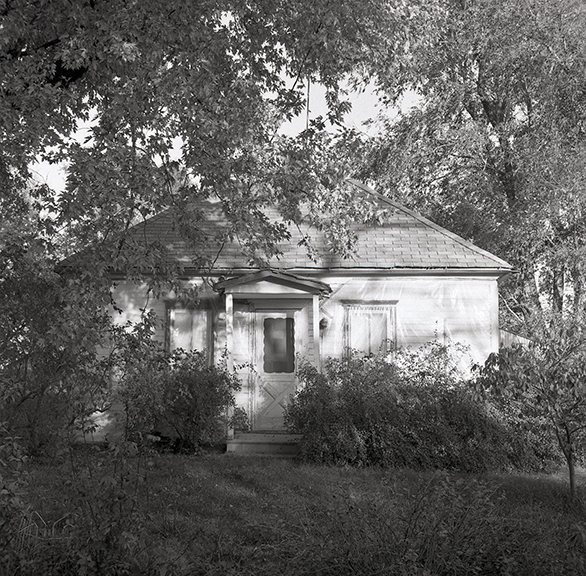
Can we step back in time a bit? You grew up in Wisconsin, completed your B.F.A. at the University of Wisconsin-Oshkosh and M.F.A. from the University of Nebraska. Perhaps, to start with, you can share your early experiences or an encounter with the visual arts. How were the arts a part of your youth? Were there any individuals who piqued your present-day interests?
Neither of my parents were artists or had interest in traditional art, but I would say they were art-adjacent/makers. My mom sewed clothes for me, she also knit and crocheted. My dad worked in the trades, and he did all the remodeling and electrical work on our house. I think a lot of my interest in art as a kid came from reading children’s books. In the summers I went to the library every day and spent hours reading all the classics. Dr Seuss was my favorite. I loved the scruffy-looking characters and crazy structures and fantastical spaces. It really got my imagination going- I wanted to be in those places.
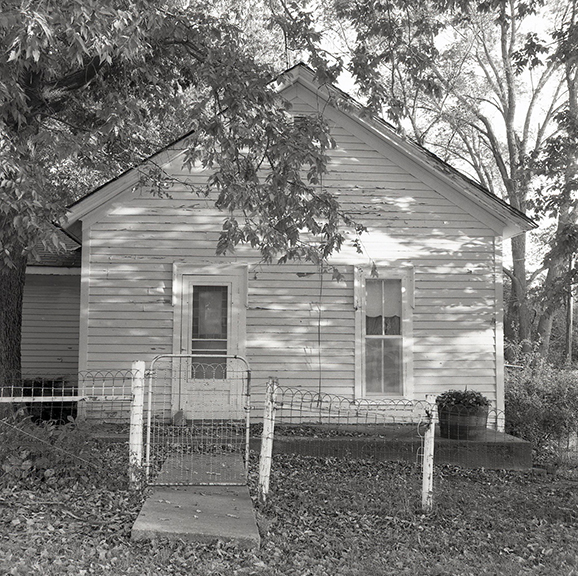
Your primary studies were in photography. In series like Nebraska and Photographic Objects there’s a sense of human absence due to the focus upon artifacts and place. Can you discuss these initial investigations? Do you see any connection between these images and what you are presently working upon?
Being a naturally shy and introverted person, I preferred to learn about people by studying their homes and possessions. In Nebraska, I had just moved to the state and was trying to get my bearings. I drove around to tons of little towns around Lincoln and looked at the houses and yards, businesses. A lot of the towns were modest farm/ranch towns; I felt an affinity coming from a similar environment in WI. The Photographic Objects series is a direct precursor to my current work. I was interested in using a product called Liquid Light. It was a photo emulsion you could paint on different materials- wood, cement, and print on it like photo paper. I scavenged some used pegboard in the art building and realized the pegboard material had resonance for me. It reminded me of my dad’s workshop in my childhood home. He had his tools meticulously arranged alongside some old girly photos. It became a shorthand element referring to my blue-collar, working-class background. My current pieces have this same shorthand. I came across a floor mat that had spikes and created a pattern that looked a lot like pegboard. I use this texture now in all my pieces and adds a personal layer of meaning for me.

Though your primary medium was photography, I believe you took a ceramics course late in undergrad. Can you discuss your shift from photography to ceramics? At some point you applied photo-based emulsions to ceramics. Presently, the focus of your aesthetic practice is purely upon the ceramic medium.
I studied photography in college in the late 80s-early-mid 90s. I developed my own black and white film and spent hours printing in the darkroom. The technical aspects of photography were so magical to me, and I loved the possibility of surprises that could happen through all the steps getting to a final print. I also took one ceramics class in my last semester in undergrad. I loved the class; the professor told me he thought I had a gift for it. I wanted to continue working with ceramic in grad school, but the program was very traditional, and mediums were segregated.

The timing of college also coincided with the onset of digital photography and Photoshop. Shortly after grad school I no longer had access to a physical darkroom. I had done some Photoshop and digital printing previously but doing all my art on the computer or having a lab print my work left me feeling detached. I missed the technical steps and sense of satisfaction working with my hands in the darkroom.
I had a friend who was taking class at the Evanston Art Center, and I decided to pick ceramics back up to get the tactile satisfaction I was missing.
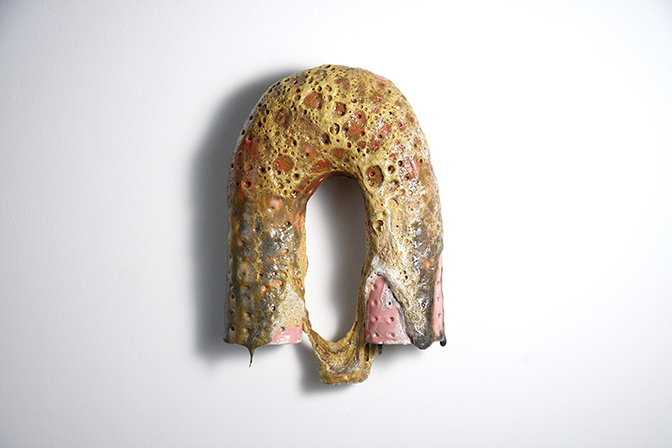
Can you walk us through your conceptual and tactile process?
I work intuitively and in series. I repeat similar forms and tweak elements in the next version. It all builds on itself. When I picked ceramics back up, I focused on hand building with slabs of clay. I like the feeling of building something. Making something three-dimensional is almost like making another being- it has an inside and outside, you can hug it. I am drawn to texture and add layer upon layers to create depth. I stamp texture into the clay itself, leave seams when I’m assembling, and add slip and multiple layers of glaze, often firing several times.
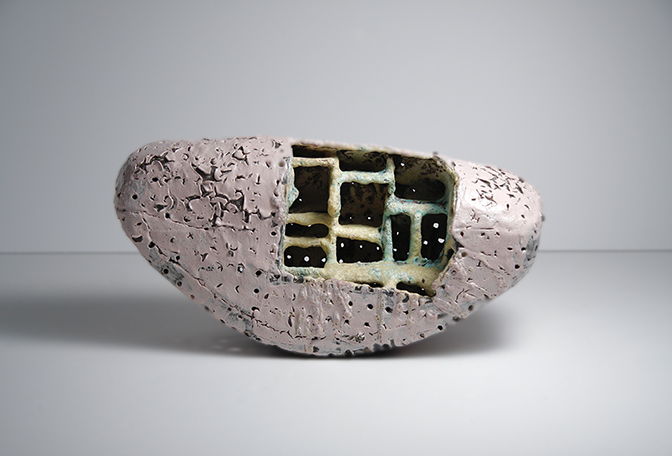
In recent time you have been creating these structures that appear to be buildings with crudely revealed interiors. The internal sections of these sculptures are raw, highly textured, almost grotesque. There’s an implying of something “dark” beneath the shell that is not readily present upon first inspection. Why did you decide to expose the inside of these works? What are you hoping to reveal?
Before I started showing interiors of sculptures my pieces were closed forms- hollow, thin, and lightweight. As I was making them, I realized I enjoyed the space on the inside. It was like I was making a secret world only I knew. These ideas are parallel to my own interior world. People often tell me I seem laid back and chill, but they have no idea what is happening inside my brain. I wanted to reveal the reality of my interior.
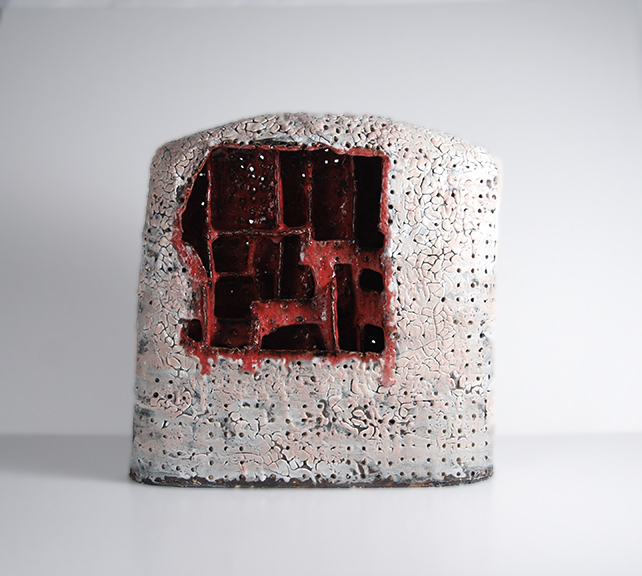
What do you value most in your aesthetic investigations?
I think I became a visual artist to communicate emotions I was never able to verbalize. I am working out feelings and events I have been holding onto since I was a child. It’s a way to exorcise demons- I hope. Also, the making process feels magical to me. Sometimes I make a sculpture and when it’s done, I step back and wonder where it came from. Also, I LOVE being surprised. Glaze doesn’t look like the final product in its liquid form. It changes color, and some of the glazes I use changes texture. You never know for sure what you’ll get until you open the kiln. It’s addicting.
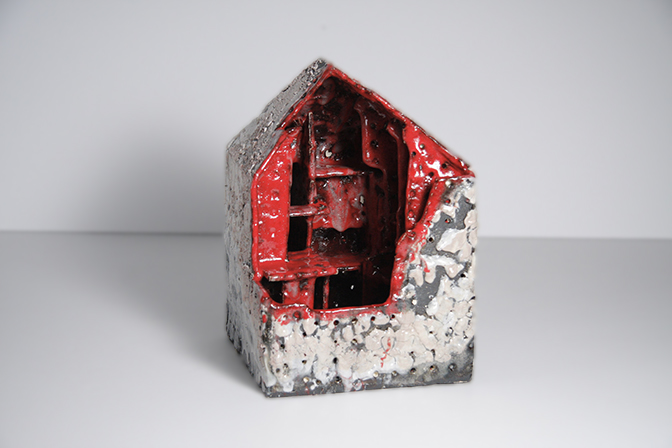
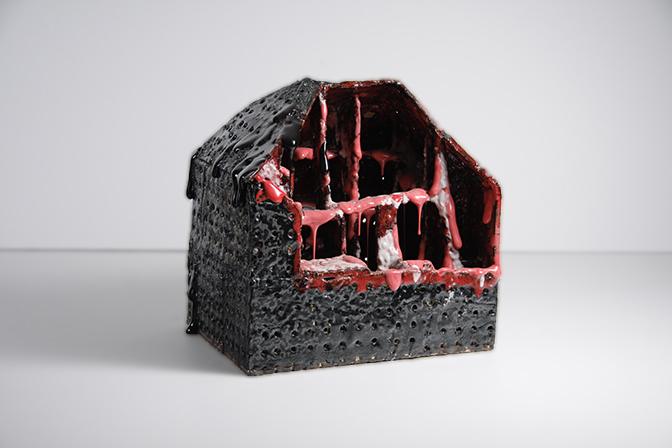
You are presently showing work at Geneva Center for the Arts in Geneva, Illinois. Can you discuss what you are showing? What are some items you plan to work upon in the spring?
Yes, I have works in Transparent, Translucent, Opaque, at the Geneva Center for the Arts, in Geneva. Also, I will be showing at James May Gallery’s new space in Milwaukee, Wisconsin, at 2201 N. Farwell. In each, I am showing a grouping of recent house sculptures with the exposed interiors. I am planning on continuing to work on this series with different iconic forms with exposed insides and pushing it to show more of the interior structure.
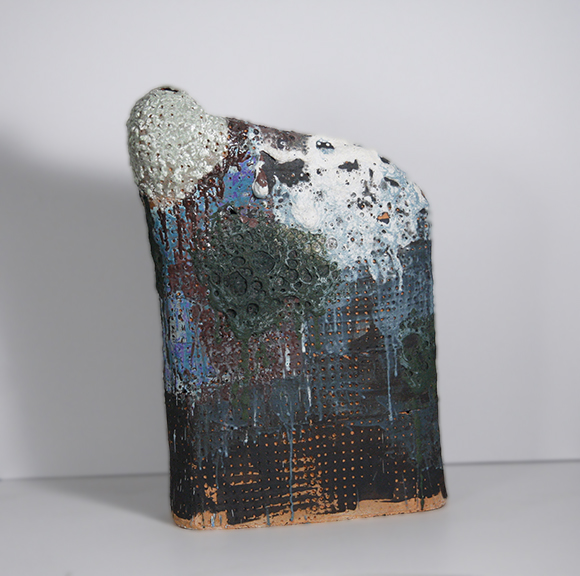
For additional information on the aesthetic practice of Jill Birschbach, please visit:
Jill Birschbach – http://www.jillbirschbach.com
Jill Birschbach on Instagram – https://www.instagram.com/jillbirschbach/?hl=en
Midwest Clay Guild – https://midwestclayguild.net/
Geneva Center for the Arts – https://genevaartscenter.org/
John May Gallery – https://www.jamesmaygallery.com/
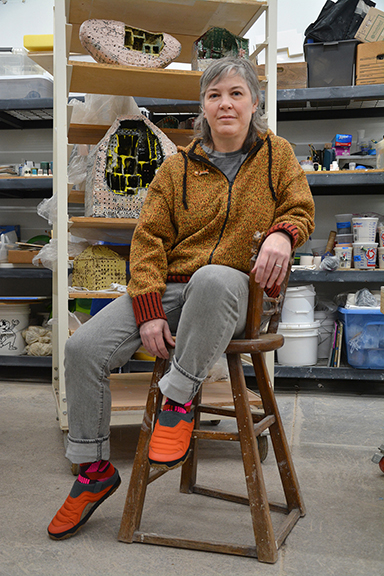
Artist interview and portrait by Chester Alamo-Costello


